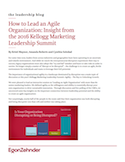Insights from the 2016 Kellogg Marketing Leadership Summit
For some time now, leaders from across industries and geographies have been operating in an uncertain and volatile environment. And while we watch the entrepreneurial disruptors experiment their way to success, legacy organizations must also adopt this “try and fail” mindset and learn to take risks in order to survive. No longer simply a matter of “disrupt or be disrupted” – the challenge is to create an agile, fertile environment for individuals and teams to leverage their full potential.
The importance of organizational agility in a landscape dominated by disruption was a main topic of discussion at this year’s Kellogg Marketing Leadership Summit: Agility – The Key to Unlocking Growth.
We were pleased to lead an interactive session on ‘Leading an Agile Organization’ with more than 80 senior marketing leaders. We defined agility as the willingness and ability to essentially disrupt your own organization to drive sustainable innovation. Through discussion and live polling of the CMOs, we uncovered some key insights on the important connection between leadership potential and the ability to create an agile organization:
Not surprisingly, nearly half of the people in the room said that their organization was both disrupting and being disrupted. Less than 10% said neither was taking place.
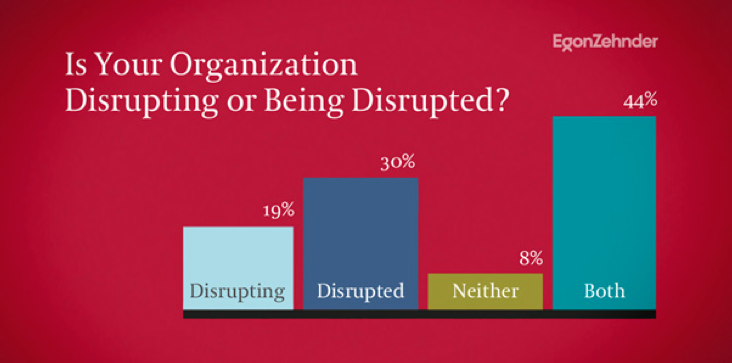
So clearly, companies are not just one or the other – and entrepreneurial startups face many of the same challenges as the stalwarts in the industries they set out to disrupt. But across a spectrum of different organizations and business models, who is best positioned to ensure that organizations intentionally pursue agility and adapt to disruption? Overwhelmingly, the marketing leadership surveyed agreed that agility begins in the C-suite, not with a digital expert, and over 50% believe that the CEO is in the best position to drive the agility agenda.
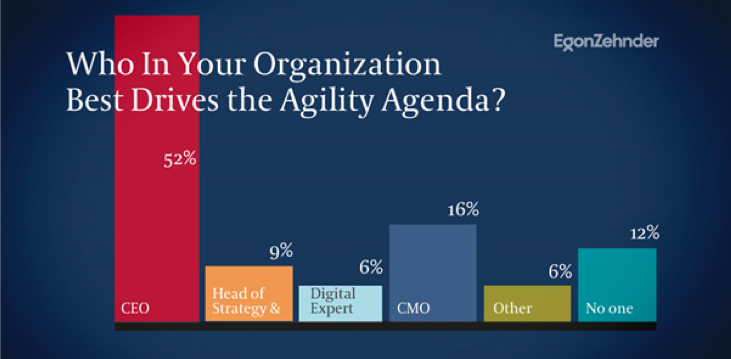
Session attendees were split on how their organizations approach one inevitable byproduct of innovative thinking – failure. Just over half of attendees surveyed asserted that their company embraces failed projects and lives by the mantra to fail fast and learn from it. The other half said that their company has a ‘failure is not an option’ mentality. But how can companies be agile, innovate and try new things if there is no room for failure?
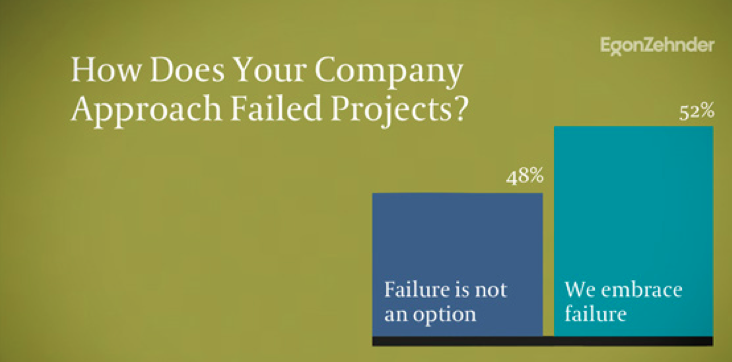
We talked about the importance of developing high potential talent in our teams – individuals with the curiosity, insight, engagement and determination that is critical to creating an agile organization that is willing to take risks and reward both failure and success. Focusing on potential in development and succession plans helps build leaders and teams who can set this kind of agenda, and create the environment for others to collaboratively and sustainably innovate. After all, the businesses and even jobs of tomorrow will be different, so we must identify the leaders who can adapt. What characteristics help identify potential? Curiosity about what comes next or what is possible. Determination – the ability to pick yourself back up again, even after failure; necessary in order to thrive in complex, often uncomfortable environments. Insight – the ability to see the big picture and to connect many, often conflicting, agendas, data points and opinions and articulate a vision and a strategy to achieve it. And creating this shared vision takes leaders who score high in engagement – they are the influencers who motivate teams to collaborate to achieve a common goal.
We asked the marketing leaders which trait of potential represented their teams’ biggest strength, and nearly 50% said determination – not surprising given that about the same number reported working in organizations that are being both disrupted and are disrupting, and that their organizations embrace a try and fail model in order to adapt to the new challenges and opportunities presented by wholesale disruption. So clearly determination in these scenarios is a good and necessary thing – however determination in the absence or without enough of the other three traits does not necessarily lead to a culture that embraces experimentation, or that succeeds at leading innovation. What is missing from these organizations is the critical mix for disruption and transformation: curiosity and insight. People with these traits excel at learning and synthesizing information, developing and testing hypotheses, and generating novel ideas. They are comfortable wading through unchartered territory to create new categories and deliver services in unique ways. If they also are determined, they will work smarter – not just harder.
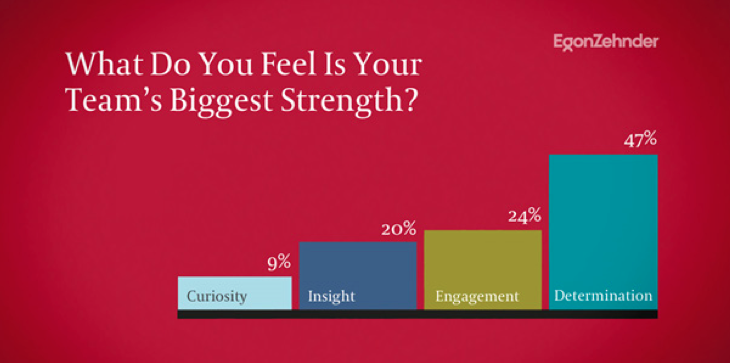
At the heart of the discussion is the recognition that agility requires an organizational mindset and specific leadership capabilities. Leaders of agile companies must identify and retain the talent capable of leading innovation, and create a culture that is committed to experimentation and comfort with failure as a key to future success.






